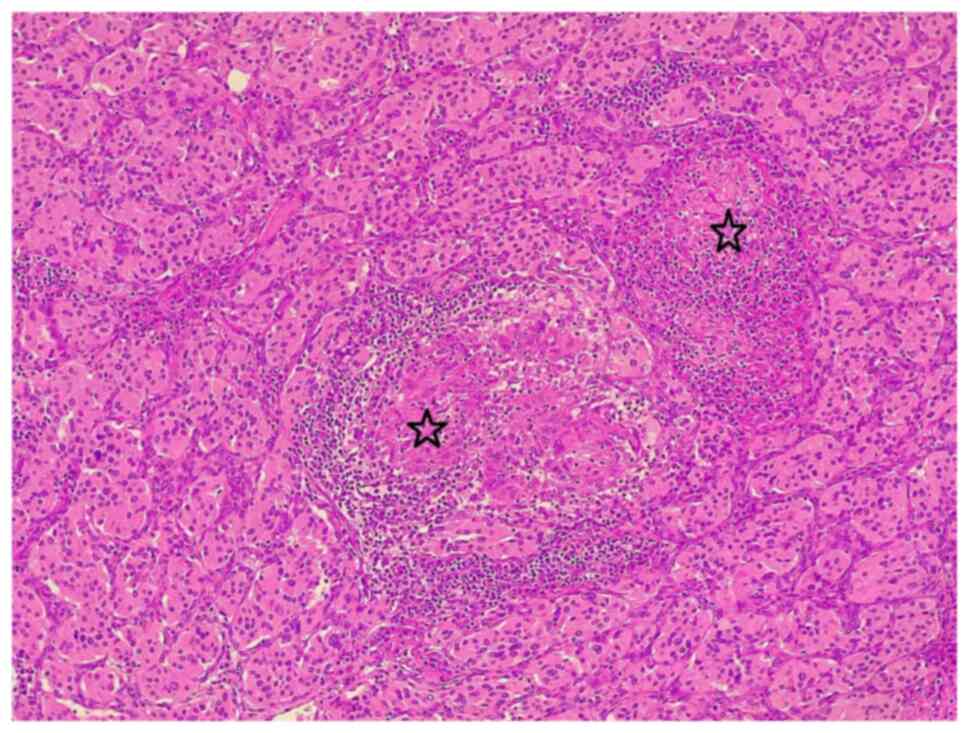Spandidos Publications style
Abdullah AM, Kakamad FH, Tahir SH, Muhialdeen AS, Salih AM, Rahim HM, Mohammed BJ, Abdullah F, Hussein DA, Mohammed SH, Mohammed SH, et al: Sarcoid‑like granulomatous inflammation in a carotid body paraganglioma: A case report and mini‑review of the literature. Med Int 3: 47, 2023.
APA
Abdullah, A.M., Kakamad, F.H., Tahir, S.H., Muhialdeen, A.S., Salih, A.M., Rahim, H.M. ... Mohammed, S.H. (2023). Sarcoid‑like granulomatous inflammation in a carotid body paraganglioma: A case report and mini‑review of the literature. Medicine International, 3, 47. https://doi.org/10.3892/mi.2023.107
MLA
Abdullah, A. M., Kakamad, F. H., Tahir, S. H., Muhialdeen, A. S., Salih, A. M., Rahim, H. M., Mohammed, B. J., Abdullah, F., Hussein, D. A., Mohammed, S. H."Sarcoid‑like granulomatous inflammation in a carotid body paraganglioma: A case report and mini‑review of the literature". Medicine International 3.5 (2023): 47.
Chicago
Abdullah, A. M., Kakamad, F. H., Tahir, S. H., Muhialdeen, A. S., Salih, A. M., Rahim, H. M., Mohammed, B. J., Abdullah, F., Hussein, D. A., Mohammed, S. H."Sarcoid‑like granulomatous inflammation in a carotid body paraganglioma: A case report and mini‑review of the literature". Medicine International 3, no. 5 (2023): 47. https://doi.org/10.3892/mi.2023.107















